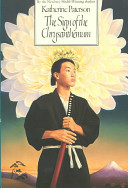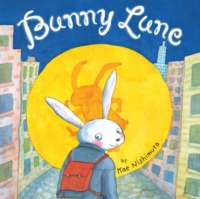
Describes the creations of some of Japan’s Living National Treasures, artists who are involved in various Japanese arts, including Yuzen dyeing, bamboo basket weaving, Bunraku puppetmaking, swordmaking, Noh theater, and neriage ceramics.

Describes the creations of some of Japan’s Living National Treasures, artists who are involved in various Japanese arts, including Yuzen dyeing, bamboo basket weaving, Bunraku puppetmaking, swordmaking, Noh theater, and neriage ceramics.

Muna has never known his father — a samurai, a noble warrior. But Muna’s mother has told Muna how he will know him one day: by the sign of the chrysanthemum. When his mother dies, Muna travels to the capital of twelfth-century Japan, a bewildering city on the verge of revolution. He finds a haven there, as servant to the great swordsmith, Fukuji. But Muna cannot forget his dream: He must find his father. Only then will he have power and a name to be reckoned with. Only then will he become a man.

Explores the different colors found in Japan’s history, culture, and landscape.

A big-city rabbit named Bunny Lune wants more than anything to go to the moon. His friend Pyonko has told him about the Japanese tradition that rabbits live there. How can Bunny Lune manage this incredible trip? Weightlessness makes him feel queasy, and he can’t go for very long without breathing, no matter how hard he tries. Besides, he could never sell enough salad to afford the fare. But maybe there’s a way he can share tea and rice dumplings on the moon after all if he follows the advice of a seasoned traveler and fuels his efforts with creativity.